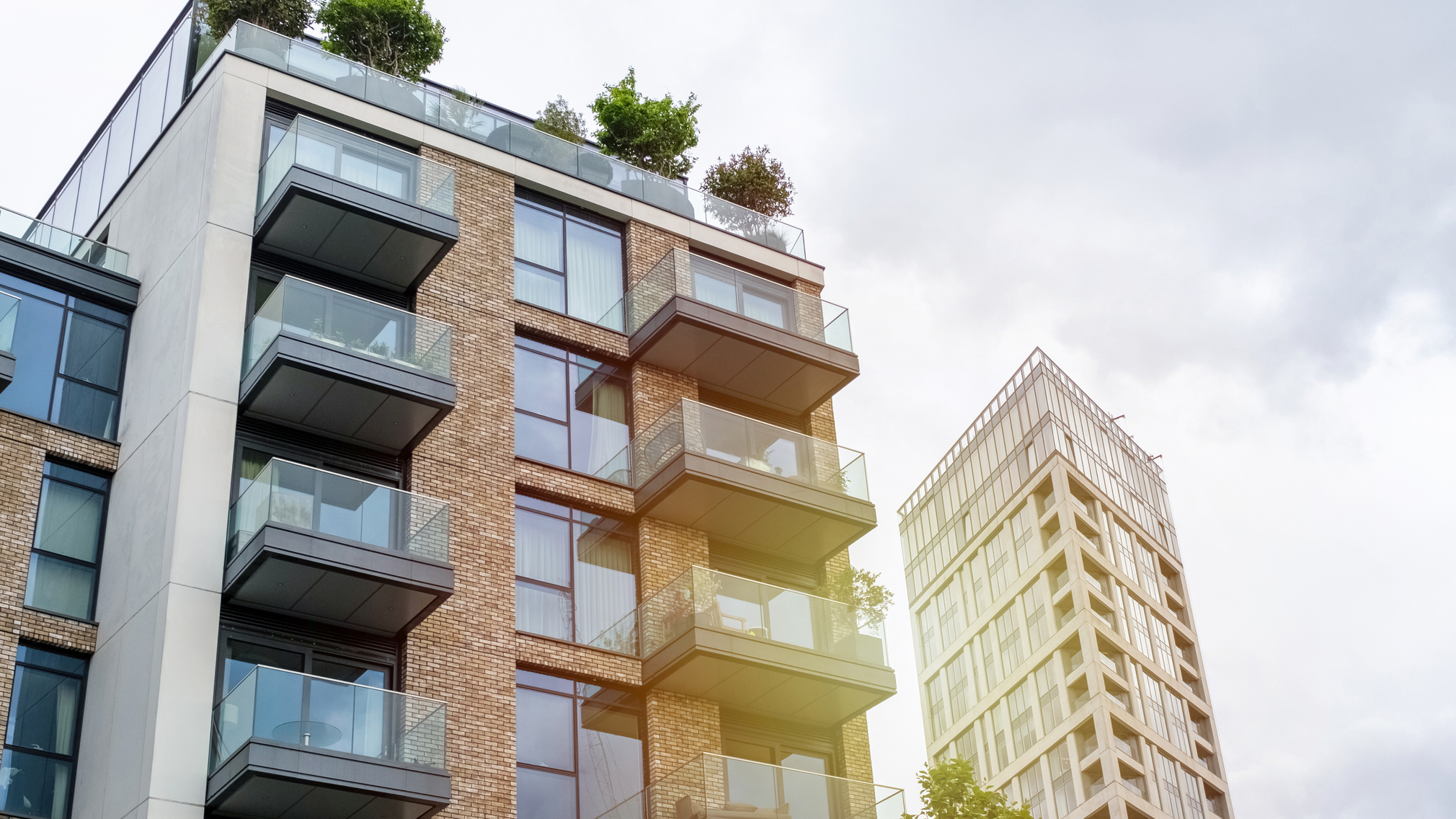How to Rent an Apartment


Written by Shawnna Stiver on September 17, 2025
Reviewed by Chrissy Tran, Edited by Alycia Lucio
Most renters (56%) report living in an apartment building. To rent an apartment, you’ll need to consider your budget, rental inventory, the application process, signing a lease, and moving.
Whether you’re renting for the first time or the fifth, we provide a step-by-step guide to show you how to rent an apartment to help you feel prepared and confident.
1. Determine your budget
The first — and arguably most important — step is figuring out what you can afford to rent. According to May 2025 Zillow research, renters nationwide need to earn more than $80,000 to comfortably afford the typical rent. Most financial experts recommend keeping your rent and utility costs to no more than 30% of your gross monthly income. Since the typical U.S. apartment costs about $2,000 and utilities are approximately $150 a month, plan for a budget of about $2,150 each month.
You’ll also want to factor in potential upfront rental costs, like a security deposit and application fee. Nearly 9 out of 10 recent renters (87%) reported paying a security deposit, and of those who did pay the median amount was $750, according to a 2024 Zillow renter survey. Most recent renters (79%) said they also paid an application fee, which was typically $50.
To rent an apartment, you can use these numbers to plan your monthly budget:
- Rent: $2,000-$3,000 (or more)
- Utilities: $150
- Security deposit: $750-$1,000
- Application fee: $50
Helpful tool: Zillow’s Rent Affordability Calculator helps you quickly understand your price range based on your income and expenses.
2. Identify your needs
Now that you know what you can afford, start narrowing down what you want — and need — in an apartment. This can help you choose the right apartment and avoid falling for a rental that looks great but doesn’t fit your lifestyle.
Here’s what to consider:
- Number of bedrooms and bathrooms: Make sure there’s enough space for everyone in your household, plus any home office or hobby needs.
- Must-have amenities: Common items on a renter’s wishlist include in-unit laundry, plenty of parking, typical appliances, and pet-friendly features.
- Location and neighborhood: Do you prefer to live close to work or school? Near public transportation? Or is a safe neighborhood most important to you? Deciding where to live usually comes with weighing several considerations.
- Pet-friendly: When surveyed, 60% of renters considered a rental that allows pets as essential. When renting, keep in mind that not all apartments allow pets, and some may charge an additional fee for pets.
- Internet provider: Most devices today rely on an internet connection. Some apartment buildings may be located in an area that only provides a single internet provider with Broadband, while others may offer multiple providers with gigabit speed.
- Building age: Out of the renters surveyed, 38% considered a newly built or recently renovated property as essential. Being the first to occupy a space can bring a sense of comfort. Decide whether this is a must have for you.
Helpful tool: You can filter your rental search on Zillow to find apartments that fit your wants and needs. Filter by number of bedrooms, in-unit laundry, pet-friendly, on-site parking, high speed internet, and more.
3. Gather your documents
Having your documents ready before you start your search can help you be ready to apply as soon as you find an apartment you love. Timeliness is everything when it comes to your rental application being approved or denied.
Here are some of the documents you’ll want to gather before you begin your apartment search:
- Proof of income (pay stubs, W-2s, bank statements)
- A government-issued photo ID (driver’s license, state ID, or passport)
- Contact info for personal or professional references
- Rental history (previous addresses and landlord contact info)
4. Resolve any credit issues
The credit score you need for an apartment plays a big role in the approval process. If your score is lower than you’d like, consider these options:
- Get a co-signer: A family member or close friend with good credit can co-sign an apartment with for you.
- Seek private landlords: Although it’s not a hard and fast rule, private landlords may be more flexible about credit requirements than large property management companies.
- Offer more money upfront: Two or three months’ rent paid in advance can build landlord confidence, if permitted by state or local law.
- Provide references: Strong letters from former landlords or employers can help offset your credit score.
5. Search for an apartment
This is where your preparation pays off. Start your search in the neighborhoods that meet your criteria and price range. You can drive around to look for “For Rent” signs, contact local property management companies, or browse rental listings online. Zillow’s Renter Search Center makes it easy to find an apartment that checks all your boxes. Start by typing in a city where you’d like to rent, and explore all the available rental options.
When you find listings you like, save them, and be ready to reach out as soon as you’re ready. During competitive rental seasons, such as summer, rental units can fill up quickly. Being prompt to apply to apartments you love gives you the best chance of being approved.
Helpful tool: Download Zillow’s Rental App to stay up-to-date on new apartment rentals. You can even monitor your application progress.
6. Tour available apartments
Seeing a listing online is helpful, but 62% of renters say taking a private tour is essential before they decide. Touring in person lets you spot things that photos or virtual tours can miss, like traffic noise, natural light, or odors from nearby businesses. If possible, ask to test appliances, check water pressure, and open closets and cabinets during your visit. This is your chance to make sure the home meets your expectations.
Helpful tool: Take advantage of Zillow’s free Rental Touring tool to book a tour at a time that works for you.
7. Complete a rental application
Once you’ve found a rental or two, submit an application. The typical renter submits two applications before securing a place. Make sure to read through the rental application carefully to make sure all required fields are complete. Typos or missing information can slow down the process or even disqualify you. Expect to pay a non-refundable application fee, typically around $50, and consent to a credit and background check.
Helpful tool: Zillow provides portable rental applications that allows you to apply to multiple rental properties for 30 days with a single application fee.
8. Sign the lease agreement
Once you’re approved, your landlord or property manager will send a lease agreement. Read it carefully as this document outlines their responsibilities and your responsibilities as the tenant. If anything’s unclear, ask before signing. Once you sign, you’re legally bound by the terms of the lease agreement.
Key things to review:
- Lease term: You may be signing a short-term lease, which renews each month, or a long-term lease for 12 months or longer. The lease term lets you know how long you’ll be responsible for paying rent.
- Rent amount and due date: Clarify the exact amount you’ll pay each month, and when payments are due. Ask if there is a grace period before rent is considered late, and the late fee penalty.
- Security deposit and upfront fees: Check what fees are required upon signing the lease and whether or not any of the fees are refundable. If fees are refundable, make sure the refund policy is included in the lease.
- Rules and regulations: Your lease should include your responsibilities, the landlord’s responsibilities, policies around pets, parking, and what is considered damage. Read through the rules and regulations carefully to avoid surprises later on.
- Utility costs: Some apartments include utilities in rent, while others require you to cover the cost or only cover partial utility expenses.
- Property access: Understand notice requirements if your landlord needs to enter the apartment, and when they’re allowed to move your belongings.
9. Pay upfront costs
Based on the terms of your lease agreement, and before you move in, you’ll pay any upfront costs. This may include a security deposit, first month’s rent, and sometimes additional fees like pet deposits or parking fees. Keep your receipts and ask for a copy of any proof of payment documentation.
10. Move in
This is the last and most exciting step: making your new apartment feel like a home. Before you unpack, do a walkthrough to check for any damage. Take photos of things like scratches on floors, chipped paint, or broken fixtures so you’re not held responsible later. Renters who documented their previous rental’s move-in condition were more likely to get at least some of their deposit back (76% who took photos versus 70% of those that did not).
Next steps:
- Transfer the utilities into your name.
- Purchase renter’s insurance to protect your belongings.
- Change your address with the postal service, your employer, banks, and subscriptions.
- Gather your apartment essentials.
- Unpack, settle in, and enjoy your new space.
Find an apartment you’ll love on Zillow
With Zillions of up-to-date listings and filters for your must-haves, it's easy to find your perfect apartment on Zillow Rentals.
Search rentals

